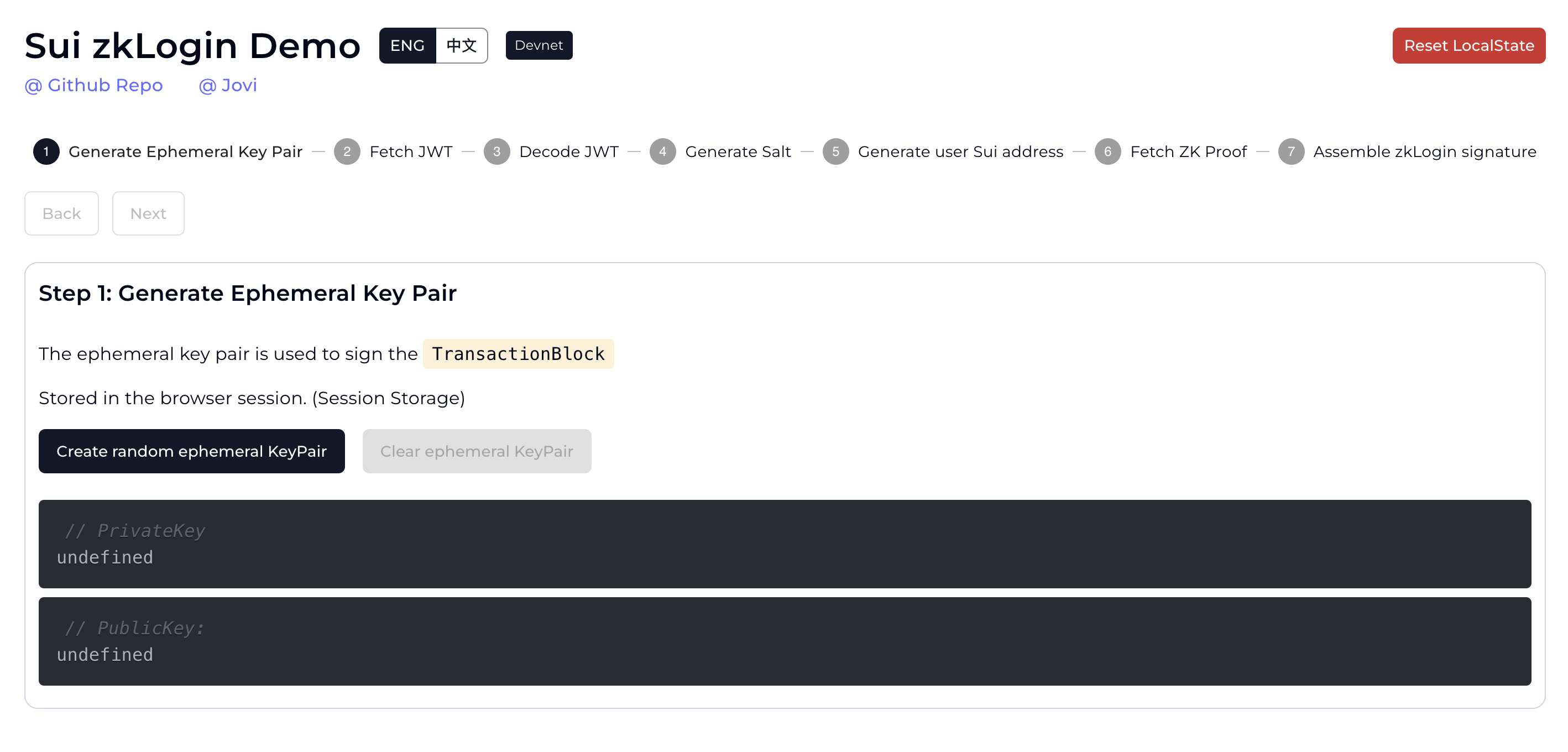zkLogin Example
The Sui community created an example to facilitate a comprehensive understanding of each step involved in Sui zkLogin for developers.
 This example breaks down the complete process of Sui zkLogin into seven steps, as follows:
This example breaks down the complete process of Sui zkLogin into seven steps, as follows:
- Generate ephemeral key pair
- Fetch JWT
- Decode JWT
- Generate salt
- Generate user Sui address
- Fetch ZK proof
- Assemble zkLogin signature
Each step includes corresponding code snippets, providing instructions on how to obtain the required data for each step.
Operating environment
The example runs in Sui Devnet. All data the user generates is stored locally on the client-side (browser). The acquisition of the zero-knowledge proof (ZK proof) is done through a call to the Mysten Labs-maintained proving service. Therefore, running the example does not require an additional deployed backend server (or a Docker container).
Storage locations for key data
The following table lists the storage location for key data the example uses:
| Data | Storage location |
|---|---|
| Ephemeral key pair | window.sessionStorage |
| Randomness | window.sessionStorage |
| User salt | window.localStorage |
| Max epoch | window.localStorage |
The user salt is stored long-term in the browser's localStorage. Consequently, provided the localStorage is not cleared manually, you can use the same JWT (in this example, logging in with the same Google account) to access the corresponding zkLogin address generated from the current salt value at any time.
Changing browsers or devices results in the inability to access previously generated Sui zkLogin addresses, even when using the same JWT.
Troubleshooting
-
ZK Proof request failure:
- This might occur because of inconsistencies in the creation of multiple randomness or user salts, causing request failures. Click the Reset Button in the top right corner of the UI to restart the entire process.
-
Request test tokens failure:
- This is because you have surpassed the faucet server request frequency limitations.
- You can go to Sui #devnet-faucet or #testnet-faucet Discord channels to claim test coins.
-
Any suggestions are welcome on the project's GitHub repo through raised issues, and of course, pull requests are highly appreciated.
Related links
zkLogin can be integrated into applications deployed on Sui.
zkLogin is a Sui primitive that enables you to send transactions from a Sui address using an OAuth credential without publicly linking the two.
zkLogin can be integrated with an application using an OpenID provider's OAuth Client ID and redirect URI.